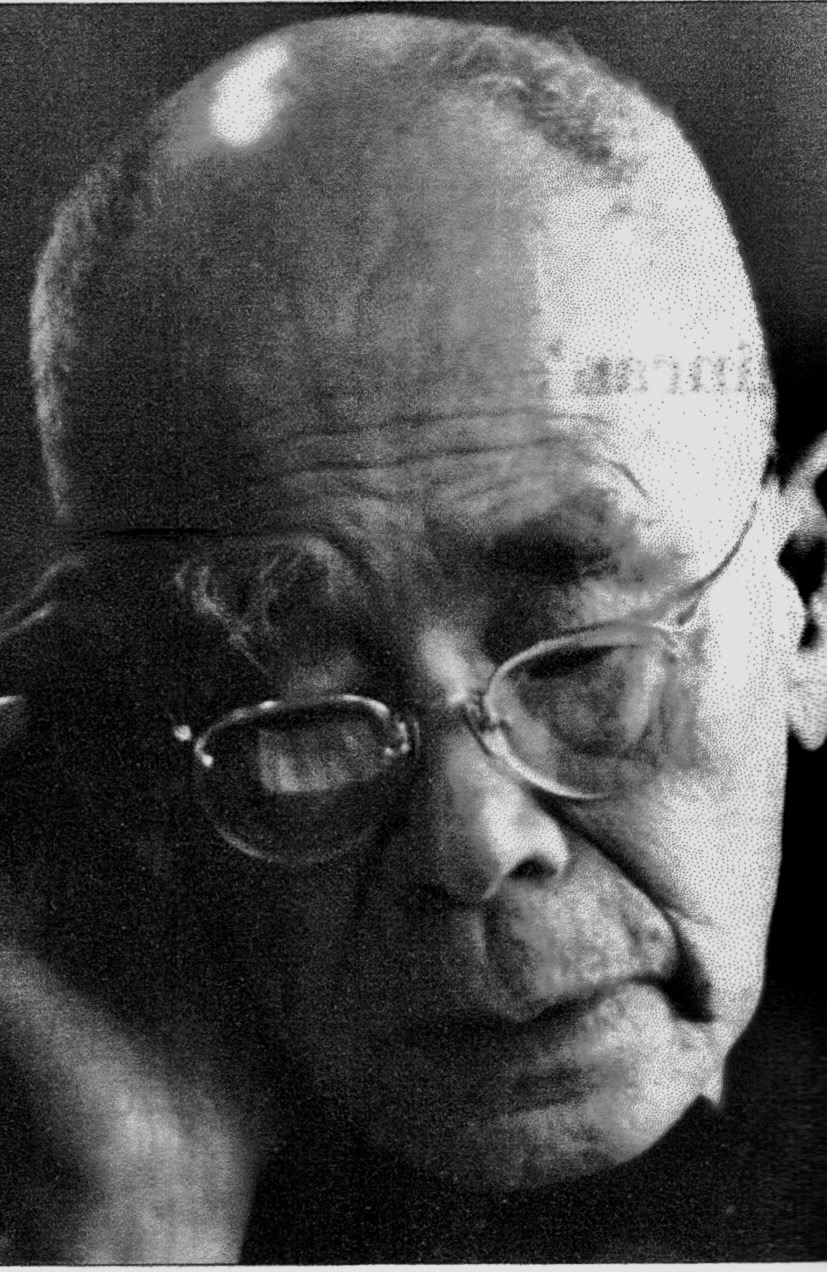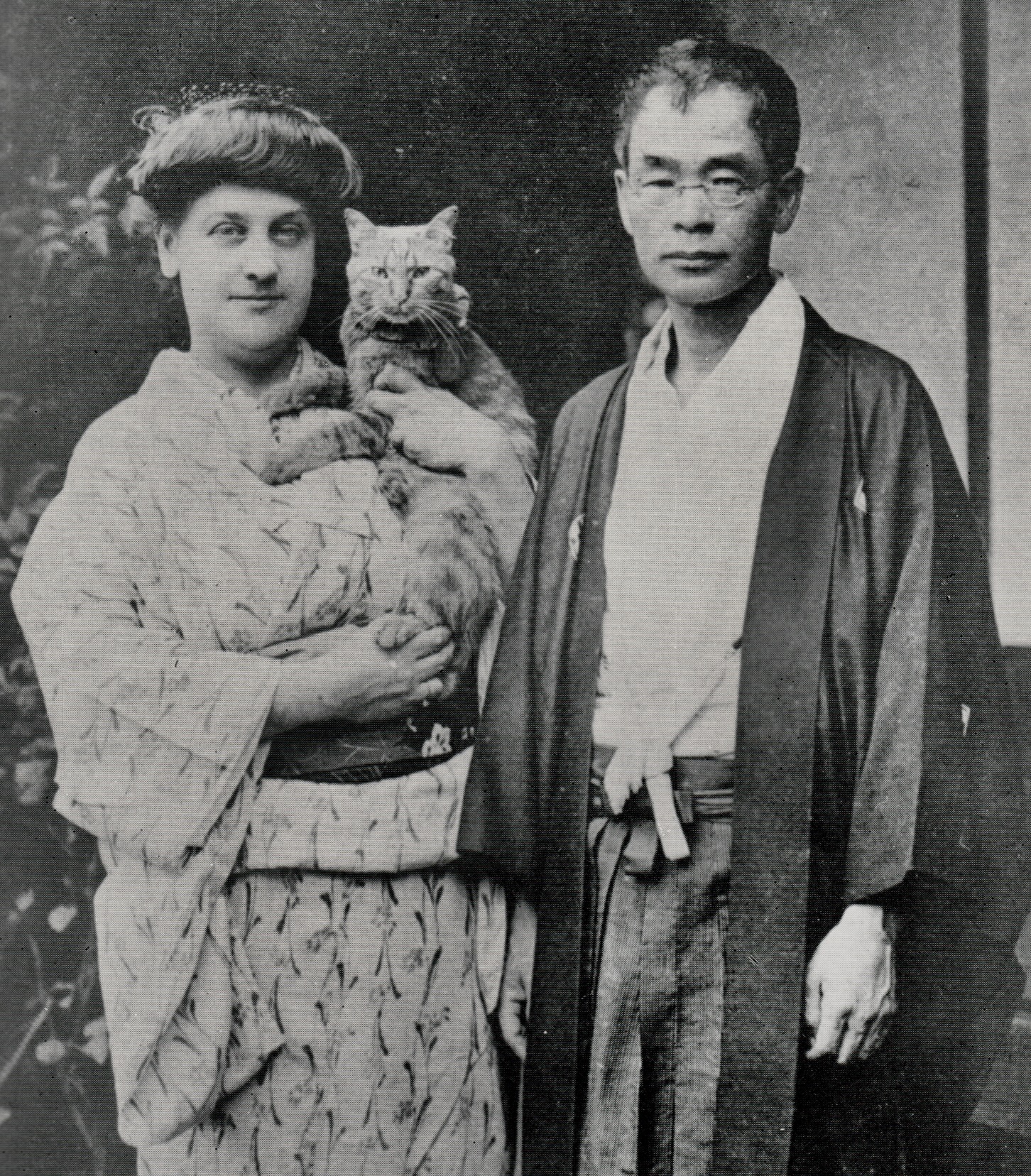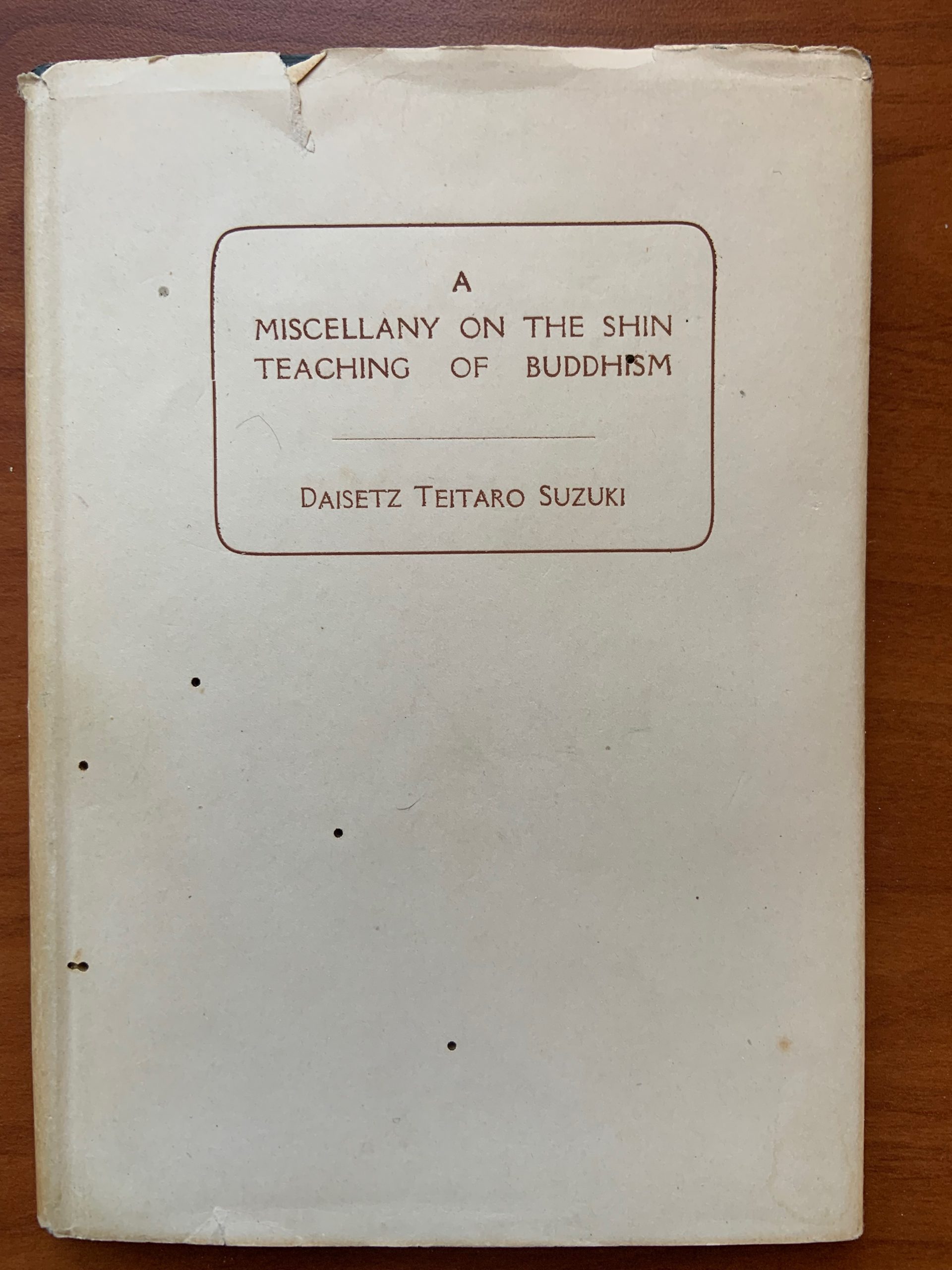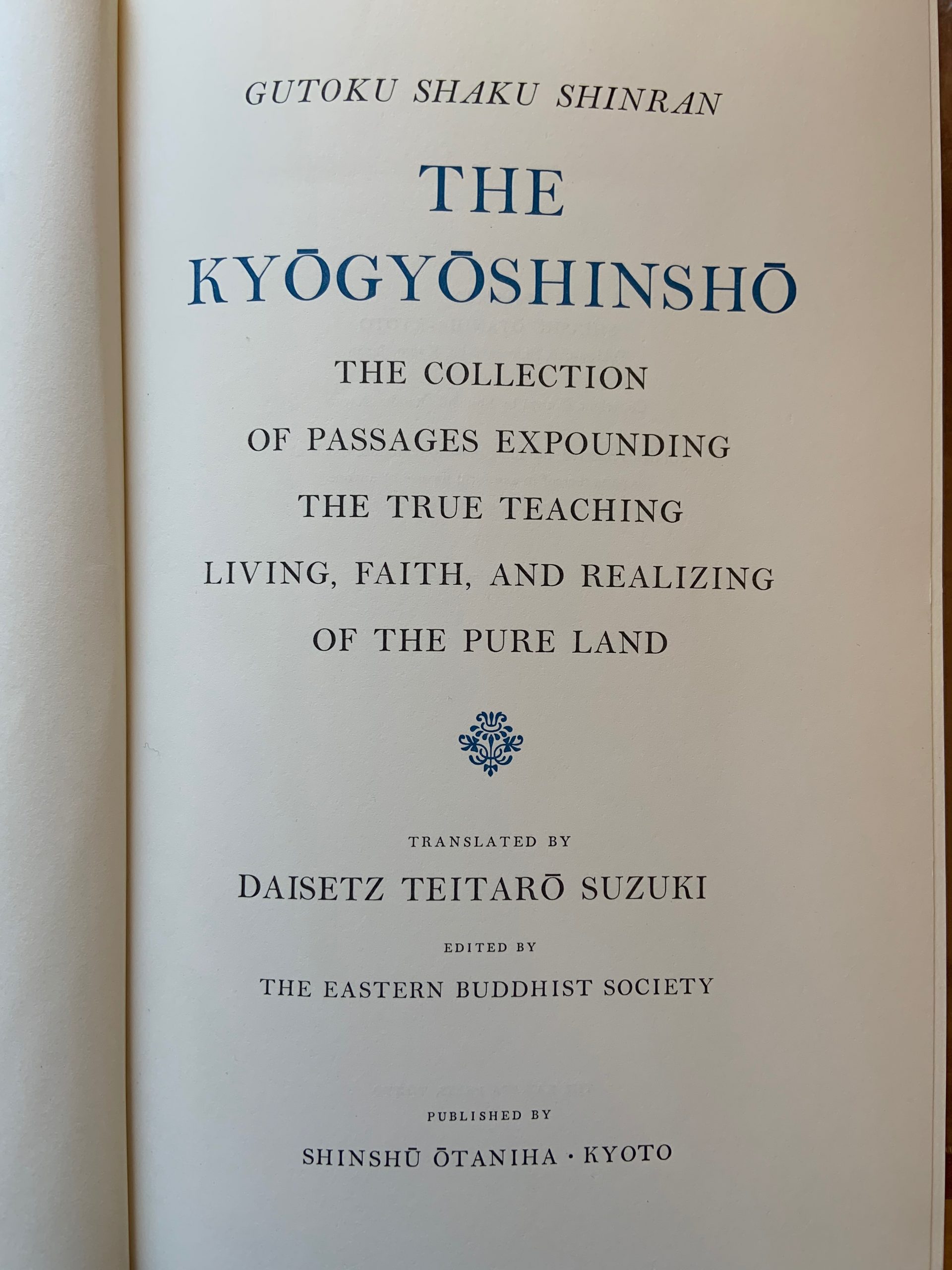
Daisetsu Teitarō Suzuki gained renown as an authority of Zen Buddhism, but in his later years turned increasingly towards Jodo Shinshu.
Over the 96 years of his life, Suzuki (1870-1966) prodigiously produced more than 100 volumes on Buddhism in English and Japanese, and is credited with popularizing Zen in American culture, especially during the 1950s and 1960s. He exerted a strong influence over a generation of Buddhist scholars, Christian theologians, Zen disciples, psychoanalysts, artists, writers and others. Born and educated in Japan, he spoke and wrote fluently in English. His book, “Zen Buddhism and Japanese Culture” is a classic. As Suzuki grew older, he turned his focus on Shin Buddhism and Shinran Shonin’s teachings.
Suzuki was a friend of Gesshō Sasaki, president of Higashi Honganji’s Ōtani University, where Suzuki began teaching in 1919. He was founding editor of The Eastern Buddhist journal, which published essays on Shin, Zen and other Buddhist traditions. His works on Jodo Shinshu express his unique voice, shaped by a deep understanding of Zen, Mahayana Buddhism, and Western philosophy. He explored the world of mystics and devout commoners, known as “myōkōnin.” Towards the end of his life, he translated into English the Kyōgyōshinshō, Shinran’s master text, published posthumously. He helped shape and propagate Jodo Shinshu in the Western world when few English works were available.
“Of all the developments Mahayana Buddhism has achieved in the Far East, the most remarkable one is the Shin teaching of the Pure Land school,” Suzuki wrote in “A Miscellany on the Shin Teaching of Buddhism,” published in 1949. “It is remarkable chiefly for the reason that geographically its birth-place is Japan, and historically it is the latest evolution of Pure Land Mahayana, and therefore the highest point it has reached.”
Born in 1870 in Kanazawa, Japan, Teitarō Suzuki lived in poverty after his father died. His mother, a devout Jodo Shinshu follower, took her young son to hear dharma talks at a nearby temple. He studied at Tokyo Imperial University and practiced Zen meditation at Engakuji temple under Shaku Sōen, who gave him the Buddhist name “Daisetsu” (“great humility”).
In 1893, Sōen attended the World Parliament of Religions in Chicago, where he met Paul Carus, a philosopher and publisher, who ran Open Court Publishing Company in LaSalle, Illinois, to whom Sōen recommended Suzuki to help translate and publish Buddhist texts and other works. Suzuki lived with Carus for 11 years. He wrote “Outlines of Mahayana Buddhism,”published in 1907.
Suzuki was particularly interested in promoting Mahayana Buddhism, which, with its mythical Buddhas and supernatural stories, was little known and often misunderstood, especially contrasted with teachings found in Pali sutras—the central focus of scholars in Europe that largely shaped the Western world’s early perception of Buddhism.
At Columbia University, he met Beatrice Lane, a graduate student interested in Eastern philosophy, who he eventually married. In 1920, the couple moved to Kyoto and both joined the faculty of Ōtani University, where he taught Buddhist philosophy and she taught English. A year later, they became co-editors of The Eastern Buddhist, founded in part to advance Shin studies and Mahayana thought. In those early years, Suzuki periodically made the arduous journey from Kyoto to a Tokyo printing company, one of the few capable of English.

Referring to Daisetsu and Beatrice Suzuki, a dedication in the 50th Anniversary edition of The Eastern Buddhist (1971) said, “To some, much of the first twenty years of The Eastern Buddhist may read like the personal history of a single person and his devoted helpmate. But in retrospect we know these are the records of those whose very lives and thoughts, openly and directly transcribed, are the living links of the Mahayana transmission.”
An editor’s note in an inaugural issue (May 1921) reads: “In the first place, Buddhism, especially Mahayana, is very much misunderstood in the West. It is forgotten that Buddhism is a living force still actively at work in molding the destiny of the East. It may be found clustered with many superstitions or antiquated beliefs, but this is also the case with other living religions. As long as everything living has its historical background, it is inevitable that it harbors something of anachronism in it. The thing however is to dig into the essence of the matter, and this is what is undertaken by the present magazine.”
Beatrice wrote for the journal and produced a well-regarded text, “Mahayana: A Brief Outline.” Her death, just before the start of World War II, led to suspension of the journal’s publication, which also faced pressure from material shortages caused by the war and the military’s suspicion of anything foreign. After the war ended, the journal eventually again began publishing.
For the next two decades, Suzuki traveled widely in the United States and Europe, lecturing, writing and translating until his death at age 96. His image as a prototypical Zen master looms large in the American imagination. By contrast, he recognized how for Westerners, Jodo Shinshu seemed hard to grasp, despite its value and contributions to Buddhist thought.
Shinshu scholar and Higashi Honganji priest Shōjun Bandō, recalled:
Mr. Christmas Humphreys, president of the London Buddhist Society, once frankly told me that among Dr. Suzuki’s writings, those on Pure Land Buddhist themes were beyond his understanding. The reason for this may have been that Amida Buddha who has an aspect of personality (technically it is called Dharmakāya as upāya or skillful means) possibly reminds people of the Christian God. Dr. Suzuki, however, repeatedly emphasized that while Amida can be regarded as a dear parent (oyasama), in this respect Amida is different in nature from God the Father in Christianity. The heart of Pure Land Buddhism thus appears to be beyond the comprehension of those, especially Westerners, who are accustomed to thinking in terms of theism and atheism, favoring one to the exclusion of the other.
(-Shōjun Bandō, “D.T. Suzuki and Pure Land Buddhism,” The Eastern Buddhist, 1981)
Suzuki translated and explained Jodo Shinshu in English using words and expressions familiar in Western religious dialogue. For example, in explaining Amida Buddha, he wrote:
Amida’s vows are expressions of his love for all beings, for Amida is love incarnate. Love is eternal life and emits infinite light. Each ray of light carries his Name to the farthest end of the universe and those who have ears are sure to hear it. They are indeed recipients of Amida’s love whereby they are at once transferred into his Land of Purity and Bliss, for hearing is receiving and receiving is believing and believing is the condition Amida requires of his devotees…
Some may wonder how the Mahayana could have expanded itself into the doctrine of pure faith, which apparently stands in direct contrast to the Buddha’s supposedly original teaching of self-reliance enlightenment by means of Prajñā [transcendental wisdom]. The Shin is thus not infrequently considered altogether unbuddhistic…
Contrasting Jodo Shinshu with teachings found in Pali sutras, he wrote:
…The rise of the Pure Land idea illustrates the persistent and irrepressible assertion of certain aspects of our religious consciousness—the aspects somewhat neglected in the so-called primitive teaching of the Buddha.
In clarifying the meaning of birth in the Pure Land, he wrote:
Indeed, being born in Amida’s Land means no more than attaining enlightenment—the two terms are entirely synonymous. The ultimate end of the Shin life is enlightenment and not salvation.
(-D.T. Suzuki, A Miscellany on the Shin Teaching of Buddhism, 1949)

Suzuki’s writings on Zen are filled with critical analysis and rational logic that sometimes turns on its head, a trait that both charms and puzzles, but serves to deepen one’s understanding and upend conventional thinking. He brought that same flair to his Shinshu writings. For example, he wrote:
There is however an innate yearning in our hearts to break up this closely knitted correlation existing between karma, causality, and self-power; there is something in the depths of our consciousness always craving to go beyond these terms of mutual limitation. This secret yearning is indeed the primal factor entering into the foundation of the Mahayana teachings. It may be regarded in a way as contradicting the views of the earlier Buddhists or even those of the Buddha. But it had already been on its way to a fuller development when the Mahayanists began to conceive the personality of the Buddha together with his teachings, as the basis of their religious life and thought. In short, it is human desire to transcend karma, to break through the chain of causation, to take hold of a power absolutely other than “self-power.” It may not be quite adequate to call this a desire; it is far stronger, more innate, more fundamental, and more enduring than any kind of desire the psychologist may analyze; it occupies the core of personality; it is awakened in the human heart with the awakening of consciousness, and really constitutes the grand paradox of human life. But it is here where we have the fundamental of the “other-power” (tariki) teaching. Karma, the moral law of causation, is the principle governing human life as it endures in a world of relativity.
In his Zen writings, Suzuki sometimes focused on quirky and colorful characters representative of the tradition. Similarly for Jodo Shinshu, he wrote about mystics and simple-minded commoners whose understanding exceeded the most learned scholars and priests.
He quotes “Tariki (Other Power) mystic” Gōjun Shichiri (died: 1900), who tells of a blind man who crosses a log bridge, then trips and falls, clinging perilously to the log above a raging river. Fearing he’ll die, he hears a boatman below calling to him, assuring him to let go the log and he’ll be safe. Doubting, the man refuses. After hearing more pleading and losing his grip, in despair, he lets go. He suddenly finds himself safely ensconced in the boat.
According to Suzuki’s translation, Shichiri explained:
Even when you understand that the Nembutsu [reciting Amida Buddha’s Name] is the only way to salvation, you often hesitate saying it by reflection within yourselves, ‘Am I all right now? Is there something more to be done?’ This is not right. Better to be fully confirmed in the thought that your karma has no other destination but that for hell. When you are fully confirmed in this, nothing will be left for you but to hasten forward and take hold of Amida’s helping hands. You may then be assured of your rebirth in his Pure Land.
Suzuki’s writings popularized myokōnin, devout commoners whose simple lives radiated a deep understanding of Shinshu teachings. The concept of myokōnin comes from Pure Land patriarch Shandao’s commentary on the Contemplation Sutra of Amitayus, in which he states:
How rare are those who constantly devote themselves to the Nembutsu. So rare are they that to them there is nothing comparable. For this reason, a simile is sought among the pundarīka of human beings. The pundarīka is a rare flower. Thus are these devotees to be called the most wonderful flowers of humanity. In China, these flowers are traditionally associated with the sacred tortoise. The Nembutsu devotees are really the finest specimens of humanity (nin, people); they are wondrously good (myōkō); they are the best of the best; they are the rarest; they are the most excellent of people.
An example of a myokōnin cited by Suzuki is Hina Mori, an illiterate woman, who in 1947 dictated her thoughts to her son. An excerpt reads:
Since childhood I was accustomed to visit the temple,
But I just listened to the sermons
Without paying much attention to their meaning or content.
Later, however, impelled by my inner anguish,
I’ve started visiting the temple anew.
I have found that the more I listen
The more grateful I feel indeed for my Oya-sama;
Such a feeling has never been experienced before by me.
Another example was a man who hears that a temple some distance away has caught fire. To help extinguish it, he soaks his bedspread in water and waves it frantically in the wind. The act appears pure lunacy, but Suzuki sees it expressing purity of heart.
Another example is a man who hears children climbing a tree in his yard to steal fruit. Instead of scolding them, he puts out a ladder for them to safely climb, an act of pure compassion.
Myokōnin are “true Shin followers,” Suzuki wrote. “They do not argue, they are not intellectually demonstrative, they just go on practicing what they have inwardly experienced. When they express themselves at all, they are unaffected, their words come directly from their inmost hearts and refer directly to the truth of their faith. This is really what Shin Buddhism claims to do for its followers.”

In a final contribution, Suzuki translated four chapters of Kyōgyōshinshō, Shinran’s master text in which he lays out the basis of Jodo Shinshu teachings. Suzuki passed away before completing the last two chapters. The translation was published in 1972. The title of Shinran’s text in English literally means “True Teaching, Practice, Faith, and Attainment,” but Suzuki chose “True Living” instead of “Practice,” an expression of Shinshu’s spirit that true understanding comes from a person’s life experiences. In that sense, Suzuki’s wisdom certainly radiates from his life and work.
-by Rev. Ken Yamada, editor at Higashi Honganji’s Shinshu Center of America

